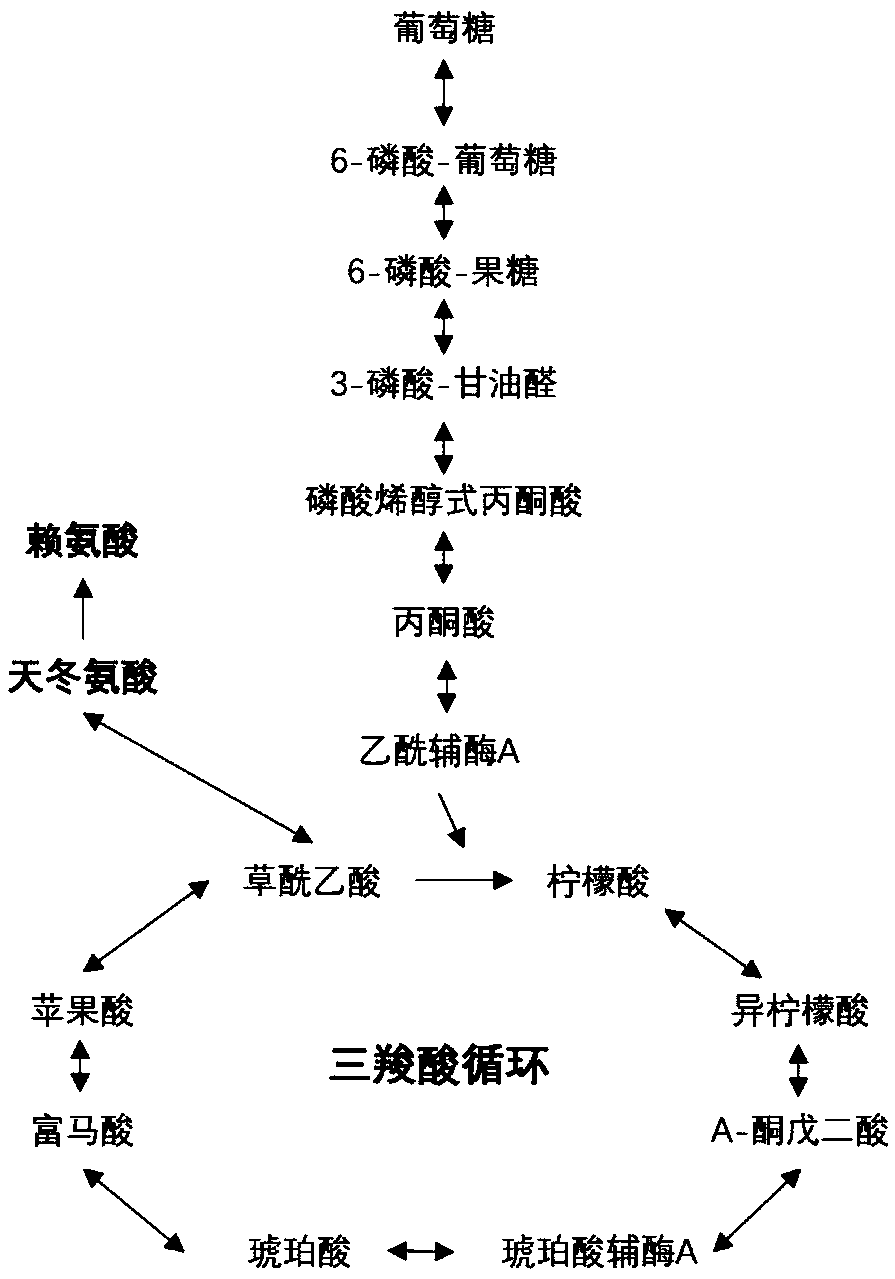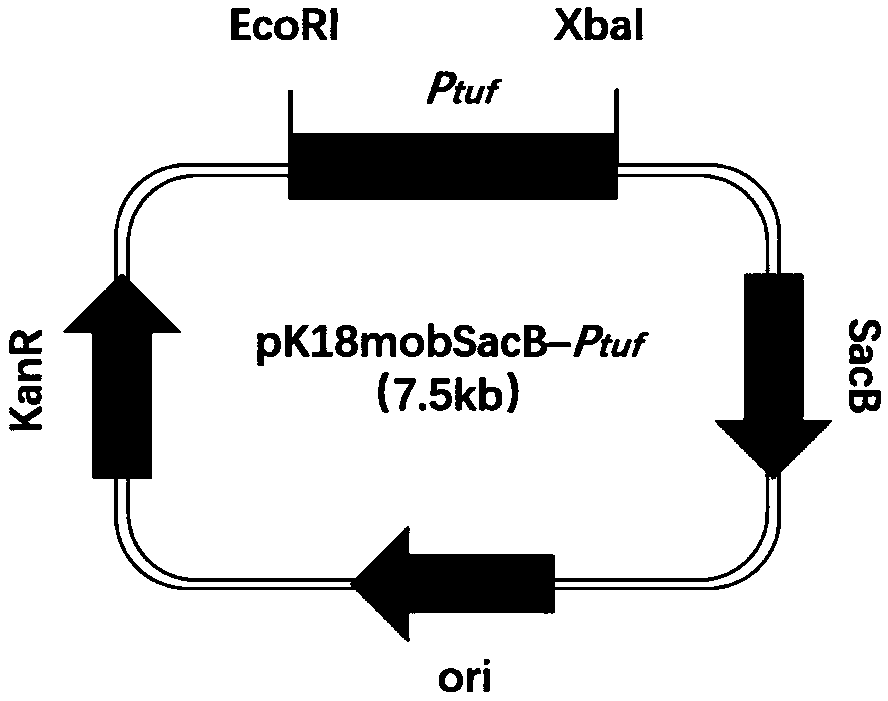Recombinant bacterium for producing L-lysine, constructing method of recombinant bacterium and method for producing L-lysine
A technology of recombinant bacteria and lysine, applied in the field of microbial fermentation, to achieve the effects of increasing production, facilitating popularization and application, and increasing fermentation production
- Summary
- Abstract
- Description
- Claims
- Application Information
AI Technical Summary
Problems solved by technology
Method used
Image
Examples
Embodiment 1
[0052] The construction of embodiment 1 lysine chassis engineering bacteria
[0053] In this example, Corynebacterium glutamicum wild-type ATCC13032 was used as the starting strain, and the metabolic flow of the branched threonine synthesis pathway was weakened by site-directed mutation of the hom (homoserine dehydrogenase, GenBank: CAF19887.1) gene; site-directed mutation of pyc (pyruvate carboxylase, GenBank: CAF19394.1) gene increases the supply of oxaloacetate, a precursor for lysine synthesis; knockout of the pck (phosphoenolpyruvate carboxykinase, GenBank: CAF20888.1) gene increases pyc* and dapB (dihydrodipicolinate reductase, GenBank: CAF20314.1) gene copy number; plasmid overexpression lysC (aspartokinase, GenBank: CAF18822.1), ddh (diaminopimelic Enzyme, GenBank: CAF21279.1), lysA (diaminoheptanoic acid decarboxylase, GenBank: CAF19884.1) genes, further enhance the synthesis pathway of lysine, and construct lysine-producing chassis engineering bacteria.
[0054] (1)...
Embodiment 2
[0094] Promoter replacement of asparaginase coding gene NCgl2026 in embodiment 2 lysine chassis engineering bacteria
[0095] According to the upstream and downstream sequences of the NCgl2026 gene promoter of Corynebacterium glutamicum ATCC13032 in Genbank and tuf Primers were designed for the promoter sequence (SEQ ID NO.40).
[0096] Using the genomic DNA of Corynebacterium glutamicum ATCC13032 as a template, using P31 and P32 as primers, PCR amplified the upstream homology arm of the NCgl2026 gene promoter; using P33 and P34 as primers to amplify the promoter P tuf ; Use P35 and P36 as primers to amplify the homology arm downstream of the NCgl2026 gene promoter. Using the above-mentioned purified PCR product as a template, using P31 and P36 as primers, and using overlap extension PCR technology (SOE) to amplify, a PCR product of 1800 bp was obtained, which contained a replacement promoter P tuf And fragments of the upstream and downstream homology arms of the replaced pr...
Embodiment 3
[0103] Increased copy of asparaginase coding gene NCgl2026 in embodiment 3 lysine chassis engineering bacteria
[0104] Primers were designed according to the NCgl2026 gene of Corynebacterium glutamicum ATCC13032 in Genbank and its upstream and downstream sequences.
[0105] Using Corynebacterium glutamicum ATCC13032 genomic DNA as a template, using P37 and P38 as primers, PCR amplified the upstream sequence of the target insertion site as the upstream homology arm of the increased copy of the NCgl2026 gene; using P39 and P40 as primers to amplify the NCgl2026 gene; Use P41 and P42 as primers to amplify the downstream sequence of the target insertion site as the downstream homology arm of the increased copy of NCgl2026 gene. Using the purified PCR product as a template, using P37 and P42 as primers, the overlap extension PCR technique (SOE) was used to amplify to obtain a 2778bp PCR product, which was a fragment containing the upstream and downstream homology arms of the target ...
PUM
 Login to View More
Login to View More Abstract
Description
Claims
Application Information
 Login to View More
Login to View More - R&D
- Intellectual Property
- Life Sciences
- Materials
- Tech Scout
- Unparalleled Data Quality
- Higher Quality Content
- 60% Fewer Hallucinations
Browse by: Latest US Patents, China's latest patents, Technical Efficacy Thesaurus, Application Domain, Technology Topic, Popular Technical Reports.
© 2025 PatSnap. All rights reserved.Legal|Privacy policy|Modern Slavery Act Transparency Statement|Sitemap|About US| Contact US: help@patsnap.com



